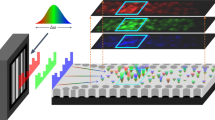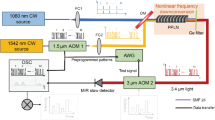Abstract
THE point developed in a new direction by Prof. Raman had been noted by Lord Rayleigh, and was mentioned very cursorily in the last sentence of my paper in the Phil. Mag. to which his letter refers. The main purpose of that paper was to express the view that, so far as I understand, independent scattering of light by the molecules of a homogeneous medium, so dense that there are very many molecules per cubic wave-length—for example, in the atmosphere—must arise from the thermal motions of the molecules rather than from irregularity of their spacing. In directions, however, that are nearly coincident with the transmitted ray there can be no sensible dispersal of phase from either cause; disturbances, therefore, completely conspire, and the light scattered by the molecules in such directions is, in Lord Rayleigh's phrase, specially favoured. Prof. Raman points out that if the phases in directions near that of the ray did not in fact thus agree, the molecules of the material medium could take no concordant part in the transmission of the energy of the main beam, and regular propagation would be impossible. It is involved in this remark that each molecule will exert its full effect on the index of refraction, however irregular the distribution may be, provided it is not so dense that the molecules will obstruct each other; and, moreover, the thermal motions will not disturb this effect. The specially favoured directions, for disturbances passed on by the molecules, must be almost coincident with the ray—must, in fact, belong to the ray after the manner of diffraction, when it is regarded as a physical filament of light rather than as a geometrical line.
This is a preview of subscription content, access via your institution
Access options
Subscribe to this journal
Receive 51 print issues and online access
$199.00 per year
only $3.90 per issue
Buy this article
- Purchase on Springer Link
- Instant access to full article PDF
Prices may be subject to local taxes which are calculated during checkout
Similar content being viewed by others
Author information
Authors and Affiliations
Rights and permissions
About this article
Cite this article
LARMOR, J. The Doppler Effect in the Molecular Scattering of Radiation. Nature 103, 165–166 (1919). https://doi.org/10.1038/103165c0
Issue Date:
DOI: https://doi.org/10.1038/103165c0
Comments
By submitting a comment you agree to abide by our Terms and Community Guidelines. If you find something abusive or that does not comply with our terms or guidelines please flag it as inappropriate.



